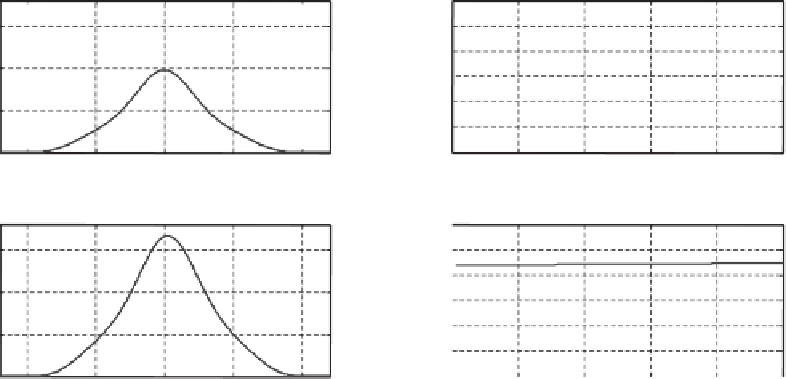Global Positioning System Reference
In-Depth Information
~
~
~
R
x
(
−
j
φ
τ
1
)isa
composite correlation
function
, which is the sum of the ideal correlation function and a second version of
the ideal correlation function that is scaled in amplitude, rotated in phase, and
delayed. When the receiver attempts to estimate delay and carrier phase from this
composite correlation function, its estimates are in error, even in the absence of
noise and interference.
Figure 6.10 illustrates the effect of one-path multipath on noncoherent
early-late processing for a signal with BPSK-R(1) modulation strictly bandlimited to
4 MHz. The top row shows results with no multipath, while subsequent rows show
The term
τ − τ
0
)
=
R
x
(
τ − τ
0
)
+
α
e
R
x
(
τ − τ
0
−
1
1
15
1.5
10
5
1
0
−
1
−
5
0.5
0
−
15
−
1
−
0.5
0
0.5
1
0
200
400
600
800
1000
Delay (microseconds)
Early-late spacing (microseconds)
15
1.5
10
5
1
0
−
1
−
5
0.5
−
15
0
−
1
−
0.5
0
0.5
1
0
200
400
600
800
1000
Delay (microseconds)
Early-late spacing (microseconds)
15
1.5
10
5
1
0
−
1
−
5
0.5
0
−
15
−
1
−
0.5
0
0.5
1
0
200
400
600
800
1000
Delay (microseconds)
Early-late spacing (microseconds)
15
1.5
10
5
1
0
−
1
−
5
0.5
−
15
0
−
1
−
0.5
0
0.5
1
0
200
400
600
800
1000
Delay (microseconds)
Early-late spacing (microseconds)
Figure 6.10
Effects of one-path multipath on pseudorange estimation, BPSK-R(1) modulation strictly
bandlimited to 4 MHz. Top row shows no multipath, while in subsequent rows MDR is -10 dB and excess
delay is 0.1
s, while phase is 0º, 90º, and 180º. Left-hand column shows distorted correlation functions,
while right-hand column shows dependence of range error on early-late spacing.
µ






















Search WWH ::

Custom Search